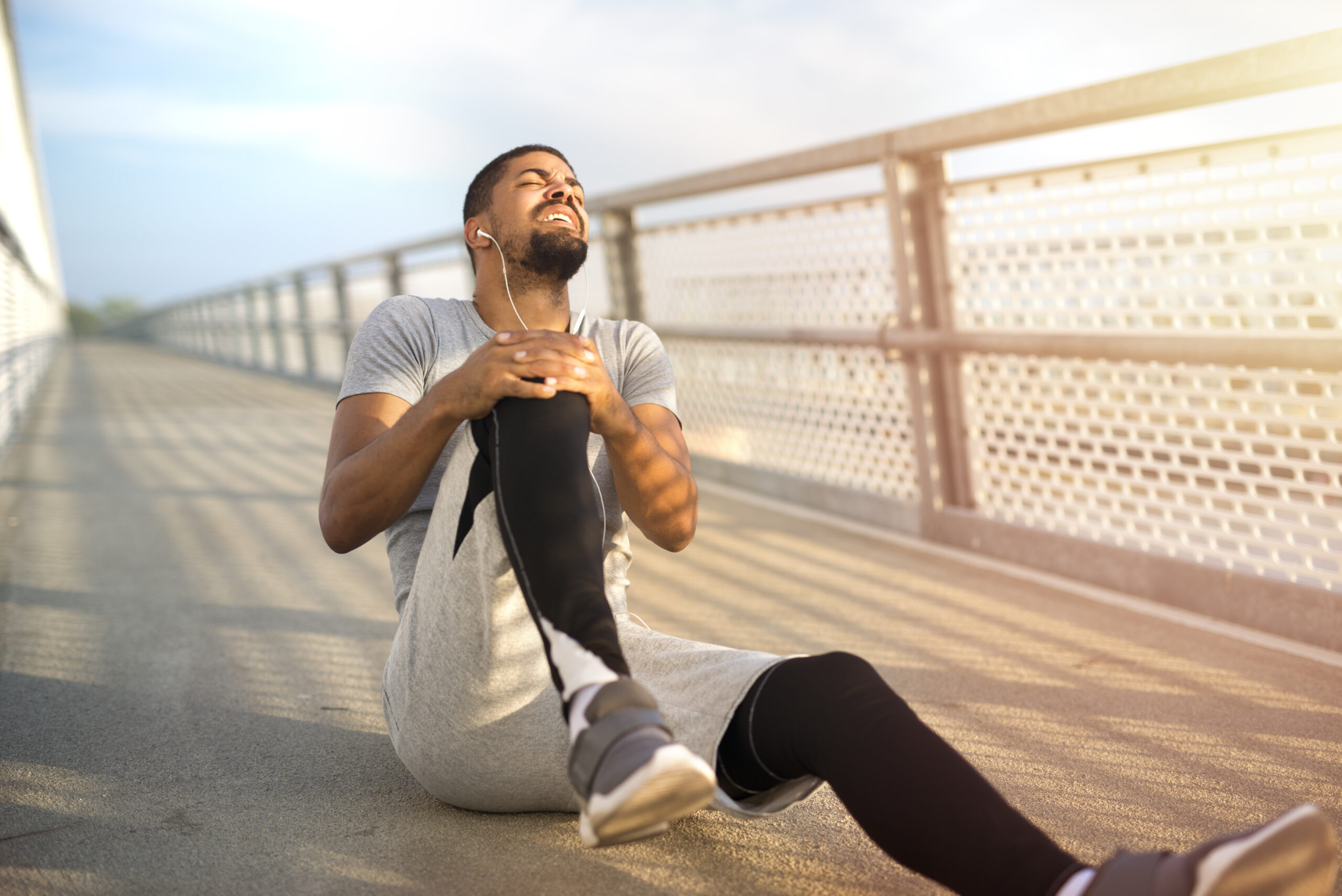Muscle cramps are an all-too-familiar issue for athletes across a range of sports. Often sudden, painful, and performance-limiting, muscle cramps have been the focus of scientific inquiry and practical sports training for decades. But recent studies are bringing new insights, challenging old assumptions, and developing novel methods for preventing and treating cramps. Here, we’ll explore what the latest research says about cramps in athletes, examining new findings in their causes, innovative prevention strategies, and potential future directions in sports science.
Understanding Muscle Cramps in Athletes
Muscle cramps are involuntary, sudden contractions of muscles that can last from a few seconds to several minutes. They’re especially common in endurance sports like running, cycling, and swimming, where prolonged muscle use can lead to fatigue and cramping. Athletes can experience cramps due to a range of factors, including dehydration, electrolyte imbalances, neural fatigue, and muscle overload. Historically, sports scientists and coaches emphasized hydration and electrolyte balance as primary preventative measures, but new research is broadening the focus to include muscular and neurological factors.
Key Findings in Recent Studies on Muscle Cramps
Recent studies reveal that muscle cramps might be more complex than previously thought, involving not only physical but also neuromuscular and biochemical triggers. Here are some critical insights from recent research.
1. Neuromuscular Control and Cramps
A growing body of research suggests that muscle cramps are significantly influenced by neuromuscular control. The theory posits that muscle cramps can result from an imbalance between excitatory and inhibitory signals in the muscles and nerves. When muscles are fatigued, the normal neural signals to contract and relax may become disrupted, leading to sustained contractions or cramps.
A 2021 study published in the Journal of Sports Science used electromyography (EMG) to study athletes during endurance events and found that fatigue in the spinal reflex pathways is likely a major factor. The study indicated that improving neuromuscular control through specific exercises, like eccentric training, could significantly help prevent cramps in high-intensity sports.
2. Electrolyte Imbalance: Still Relevant but Complex
Electrolytes—especially sodium, potassium, calcium, and magnesium—play a vital role in muscle contraction and relaxation. Traditional sports science has emphasized that an imbalance in electrolytes, often due to excessive sweating, leads to cramps. While this is still valid, recent studies indicate that the connection may be more nuanced.
A 2022 review of endurance athletes found that while dehydration and electrolyte imbalances can contribute to cramps, they’re rarely the sole cause. The study recommended a tailored approach to electrolyte intake, where athletes replenish based on individual sweat rates and activity duration. Personalized hydration strategies are now gaining attention as a more effective method for preventing cramps compared to generalized advice.
3. Muscle Fatigue as a Primary Cause
Several recent studies have honed in on muscle fatigue as a significant trigger for cramps. A 2023 study conducted by the American College of Sports Medicine followed professional cyclists and revealed that cramping was often linked with the physical strain of high-intensity intervals. Athletes who developed cramps had typically engaged in long, strenuous bouts of exercise without adequate muscle recovery.
Interestingly, the study also found that athletes who incorporated interval training and regular muscle conditioning were less likely to suffer from cramps, emphasizing that endurance is not just about cardiovascular fitness but also muscular resilience. Strengthening and conditioning programs that build muscle stamina can play a substantial role in cramp prevention.
Innovative Approaches to Cramp Prevention
With these new insights, sports science is exploring innovative methods for preventing muscle cramps in athletes, moving beyond traditional hydration and electrolyte supplementation. Here are some of the emerging strategies:
1. Neuromuscular Training Programs
Given the influence of neuromuscular factors on cramping, training programs are beginning to include exercises that focus on enhancing neuromuscular control. Exercises that improve motor neuron activation, increase stability, and enhance muscle memory are being incorporated into athletic training to target muscles most susceptible to cramps. Techniques like proprioceptive neuromuscular facilitation (PNF) are gaining popularity as they help improve muscle flexibility and strength, contributing to better control and reducing cramp likelihood.
2. Personalized Hydration Strategies
While hydration has always been central to sports science, the “one-size-fits-all” approach is being replaced by personalized hydration strategies. Recent advancements allow sports scientists to assess athletes’ sweat rates, electrolyte losses, and hydration needs to create customized rehydration protocols. By tailoring water and electrolyte intake to the individual athlete, trainers can more effectively prevent dehydration-related cramps without risking overhydration, which has its own set of health risks.
3. Stretching and Flexibility Programs
Static and dynamic stretching programs are gaining renewed attention in sports science as they help alleviate muscular tension and improve flexibility, which in turn reduces the risk of cramps. Recent studies recommend that athletes engage in dynamic stretching before workouts to prepare the muscles for activity and static stretching post-exercise to prevent muscle stiffness. Programs that emphasize whole-body flexibility, particularly for muscles prone to cramping, can play a key role in reducing cramp frequency and severity.
4. Electrical Stimulation for Muscle Fatigue
Innovative research is exploring the use of electrical stimulation as a preventive measure against cramps, especially in recovery phases. Electrical muscle stimulation (EMS) devices can help enhance muscle endurance and speed up recovery times, reducing the potential for fatigue-related cramps. Some professional athletes and teams have already begun integrating EMS into their training routines, but ongoing research aims to refine this technique for broader use.
Future Directions in Sports Science for Cramp Prevention
As sports science continues to evolve, researchers are exploring even more targeted approaches to prevent cramps in athletes. Some promising areas of research include:
1. Genetic Predisposition to Cramps
Genetic research is revealing that some athletes may be more predisposed to cramps due to their unique genetic makeup. Studies on gene expression in muscle function are helping identify specific markers that indicate a susceptibility to cramps. In the future, genetic testing may become a valuable tool in creating personalized cramp prevention plans, enabling athletes to manage this risk based on their individual physiology.
2. Monitoring Muscle Condition in Real-Time
Wearable technology is making strides in real-time monitoring of muscle condition. New devices can measure muscle activity, hydration levels, and temperature during exercise, providing instant feedback. With these insights, coaches and trainers can adjust athletes’ routines on the spot, preventing cramp-inducing fatigue. Additionally, using this data over time can help refine training programs to optimize muscle health and endurance.
3. Nutritional Supplements for Muscle Health
While electrolytes have traditionally been the focus, new research is investigating additional supplements, like taurine and L-carnitine, which may improve muscle resilience and delay fatigue. These supplements may have potential as preventative measures for cramps, though more studies are required to confirm their efficacy and safety.
4. Enhanced Recovery Protocols
Innovative recovery techniques are emerging that emphasize more than just rest. Cryotherapy, contrast baths, and advanced foam rolling techniques are showing promise in reducing muscle stiffness and soreness, factors that can contribute to cramping. By focusing on optimized recovery, athletes can maintain muscle function and reduce the risk of fatigue-related cramps.
Practical Tips for Athletes to Manage and Prevent Cramps
Based on the latest research, athletes can adopt several strategies to manage and prevent cramps effectively. Here are some actionable tips:
- Develop a personalized hydration plan that considers your individual sweat rate, activity level, and environmental factors.
- Incorporate neuromuscular training into your routine to enhance muscle control and stability, which can mitigate cramping.
- Add regular strength and conditioning exercises to build muscle endurance and resilience against fatigue.
- Prioritize recovery with stretching and cooling techniques to maintain flexibility and reduce muscle tension.
- Experiment with supplements under professional guidance to ensure that they’re both safe and effective in improving muscle performance and reducing cramps.
Conclusion
Recent advancements in sports science are reshaping our understanding of muscle cramps, particularly in athletes. While traditional approaches focused on hydration and electrolytes, new studies reveal the complexity of muscle cramps and highlight the importance of neuromuscular control, muscle endurance, and personalized strategies. As research continues to unfold, the future holds promise for even more targeted and effective cramp prevention methods, ensuring that athletes can perform at their peak with minimal disruption from this common but challenging issue.



